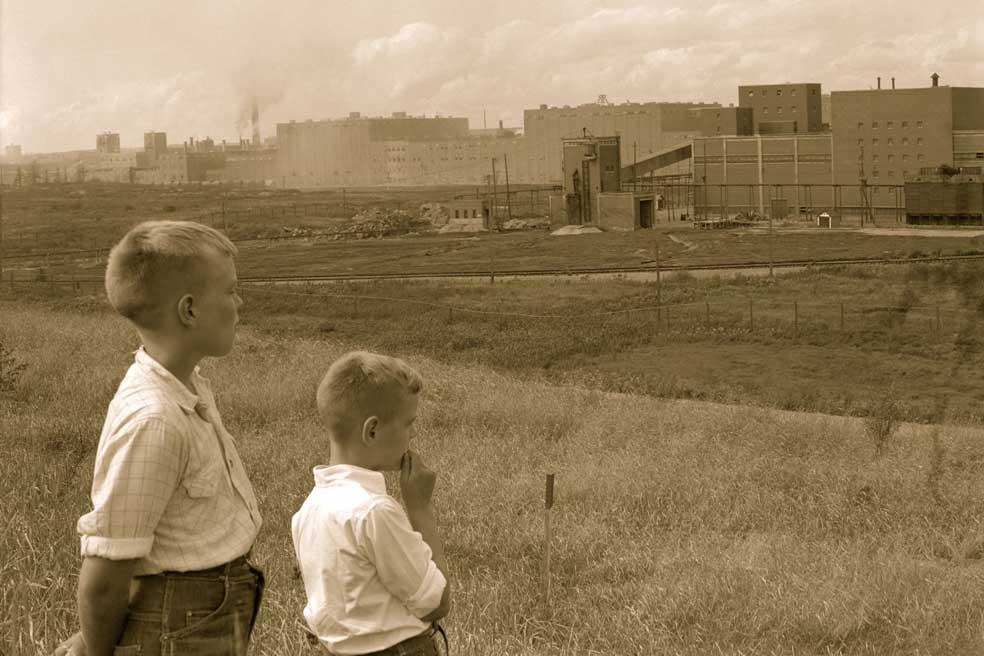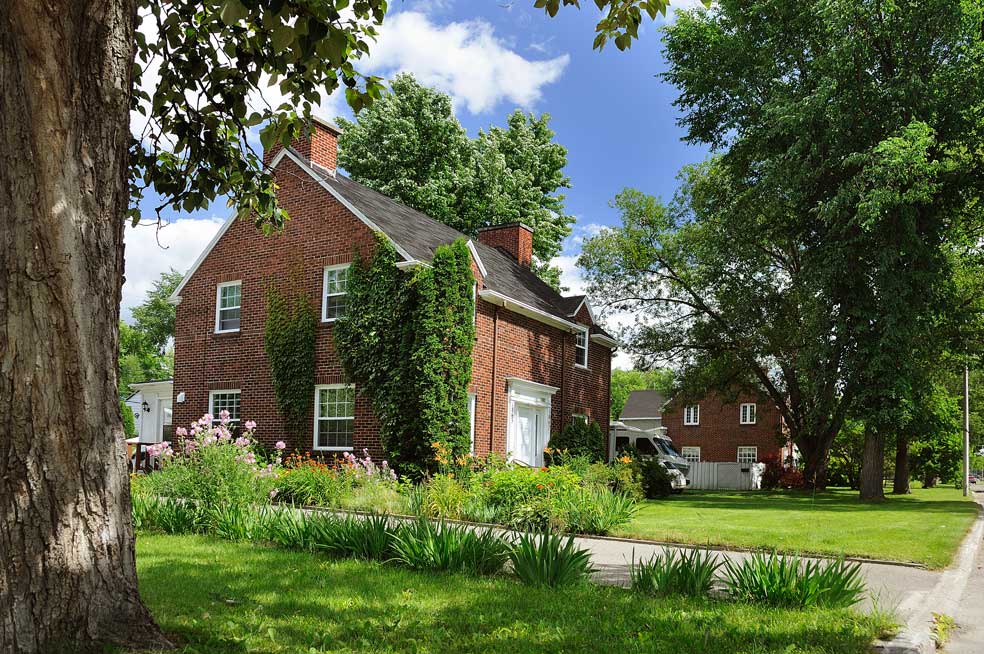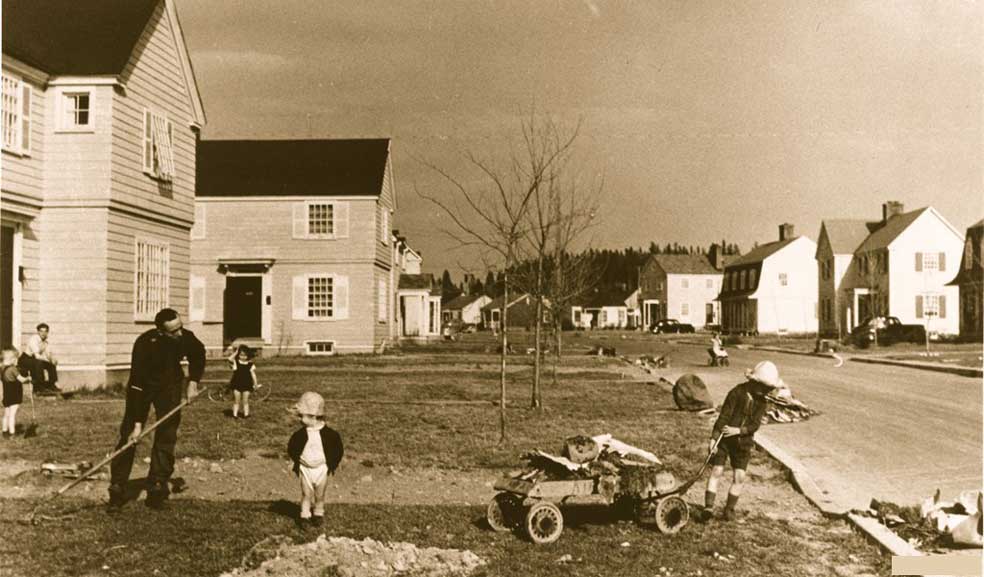Industrial vanguard and the meticulous planning of a model city
Anyone who has visited Arvida holds a vivid memory of its lush vegetation, picturesque features and seemingly winding streets, quite different from those of standard cities. The distinctive landscape is part of a comprehensive plan that its designers, Brainerd and Skougor, endowed with unique refinement, whilst incorporating the most modern ideals. In fact, Arvida owes its cachet to the design merging with the deeply sculpted land of the Saguenay region, which are defined by urban boundaries. Nowhere else could one find such a site; a city imbedded in the land as if it had always existed there.
One of Arvida’s defining features is that it has been designed by famous designers, who have created an environment fostering a sense of belonging. Just as the Manoir du Saguenay represented Arvida around the world, the Arvida houses redefined the typical French-Canadian environment by using specific features in new settings, like dormers, gabled roofs and porches. As of 1926, the Arvida neo-vernacular style is established. In addition to being built on concrete foundations, a symbol of permanence, and having all but one model for single-family homes, the particularly varied houses of “the city built in 135 days” can be purchased by residents as soon as they are built: the company had set up an innovative lease program adapted to the buyers’ financial means, allowing workers to access home ownership.
From the start, Arvida was entirely designed as an urban ensemble, with residential areas, neighbouring institutional and commercial centers, as well as a truly metropolitan downtown area; reproducing a monumental feature of great western capitals: straight wide streets marking the landscape, bounded by four large industrial and civil complexes, symbols of the industrial town in the making. This is also the only project throughout Arvida that has not yet been completed: the contingencies of the Great Depression and the rise of functionalist urbanism, less keen on monumentality, temporarily interrupted its completion. Nowadays, in the post-industrial era, the Arvida downtown area is revived; the landscape envisioned by Brainerd and Skougor is most welcoming.
|
View of the Arvida plant in 1950. |
 |
|
Arvida, Alexander Street shortly after its construction, circa 1940. |
Visiting Arvida and meeting with the locals reveals the distinctive features of the model city:
- The neo-vernacular architecture created from blending local traditions and western urban planning practices, redefines the historical landscape and the French-Canadian way of life.
- The architectural variety of its housing designed to foster the well-being of families: over 100 models of houses were designed to allow workers to become homeowners regardless of their social status.
- The state-of-the-art industrial facilities broke the world record for production thanks to the unparalleled natural potential of the region.
- The innovative construction site featuring rational planning and conditions of performance inspired by North American practices which gave life to “the city built in 135 days”.
- Extensive urban planning, elaborated from a unique conceptual graphic design, attest to the maturity of practices and the utopian value of the model town project, dedicated to creating a living environment free of social and racial segregation.
|
Arvida's lush vegetation, after almost a century of growth, forms an “urban forest” that encompasses the buildings and forges the landscapes of the “Garden-Town”. |
 |




 Official City of Saguenay website
Official City of Saguenay website